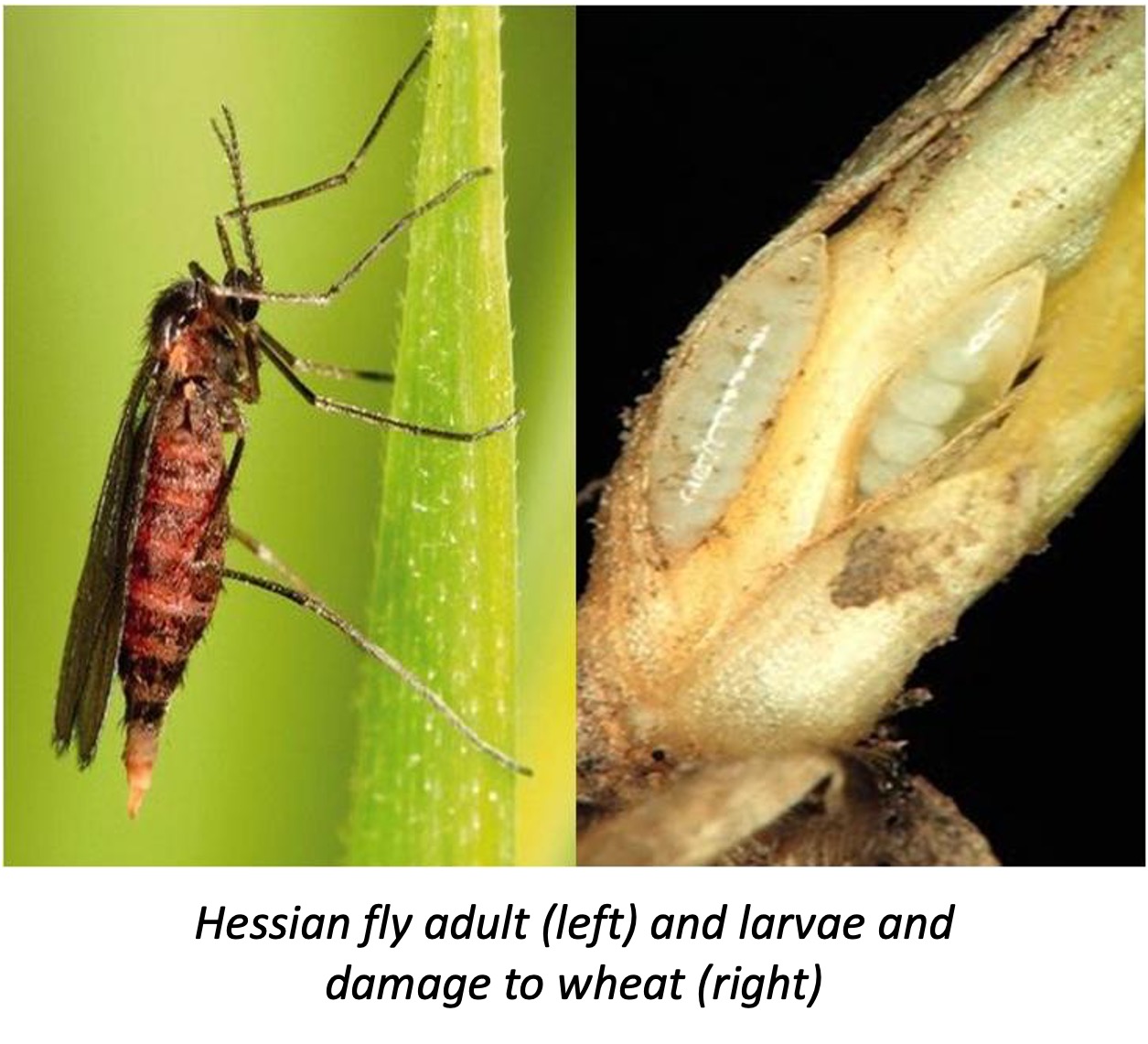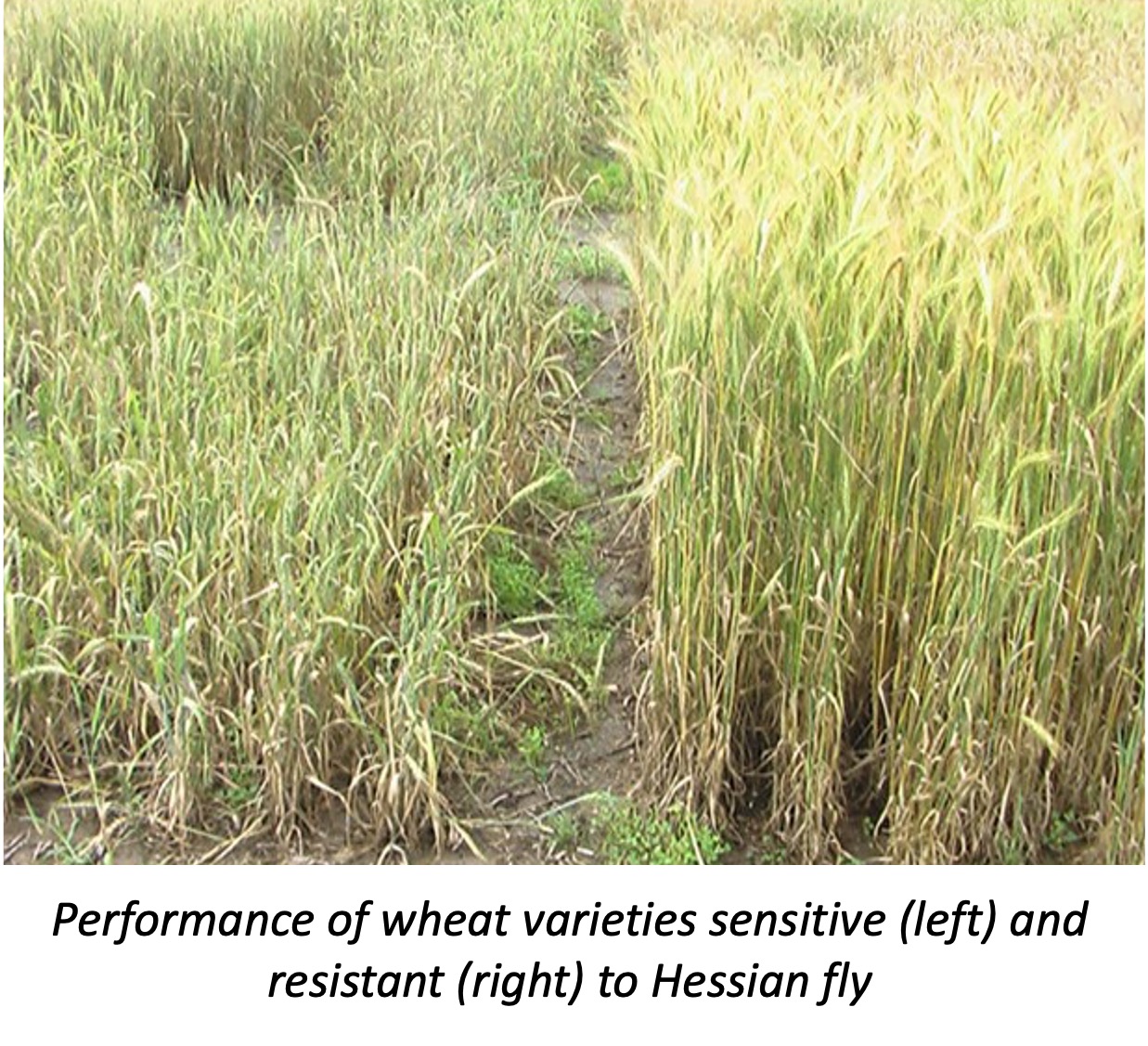Hessian Fly Resistant Wheat Varieties
Summary
Production of wheat in North Africa and elsewhere, including some parts of Sub-Saharan Africa, is threatened by infestations of the Hessian fly (Mayetiola destructor), also called gall midge. This insect pest has spread across many major breadbasket areas, causing substantial losses. Damage to wheat crops is attributed to larvae from eggs deposited in grooves on the upper side of leaves. Larvae have the ability to form hardened gall structures that offer protection from natural enemies and other control agents. On seedlings of wheat, the larvae feed on the growth apex (crown), while at later growth stages of the crop larvae establish feeding sites beneath the leaf sheath. Planting wheat varieties that possess a natural defense mechanism against the Hessian fly larvae is the most effective control method and farmers can avoid severe damage by growing these resistant varieties. Crop surveillance and extension messaging ensures the best use of these varieties.
About the Solution
Resistance of wheat to the Hessian fly originates from a naturally occurring trait that activates a biochemical defense response to larvae feeding on the leaf and stem. More than 26 resistance genes have been identified in wheat that is now incorporated into local, high-yielding varieties. Common breeding techniques such as phenotyping and backcrossing are used in the development of wheat varieties that withstand Hessian fly attack. Molecular markers associated with resistance genes for the insect pest allow fast-tracking of varietal selection, reducing the cost and time for the development and release of new varieties. Hessian fly populations can overcome resistance in wheat over time because variants of the pest emerge through genetic mutation and environmental pressure, so the effectiveness of released varieties must be monitored to avoid pest outbreak.
The dispersal of the Hessian fly in Sub-Saharan Africa has not been mapped in detail but the occurrence of this insect pest has been confirmed in wheat production zones of Eritrea, Ethiopia, Kenya, Malawi, Mali, Mozambique, Niger, Nigeria, Sudan, Tanzania, Zambia and Zimbabwe. Especially during rainy seasons in tropical climates there is a large risk for severe infestations of the insect pest because the hatching of eggs and survival of larvae are favoured by high temperatures and moisture in the environment. Genetic resistance to Hessian fly attacks is a suitable approach for protecting wheat crops in all African growing areas since the technology can be embedded into elite lines with a high yield potential and adaptations to other environmental stresses. Warmer temperatures as a result of climate change will enhance yield losses by 20% to 40% due to insect pests across Sub-Saharan Africa.
Hessian fly resistant wheat developed in Morocco, Egypt, Algeria, Syria and South Africa has been released across multiple countries in Sub-Saharan Africa. Globally, more than 200 common wheat and durum wheat varieties were developed that withstand attacks from the insect pest and offer good bread-making quality. There are ongoing efforts by breeders to incorporate resistance genes into wheat cultivars that are commonly grown in the breadbasket regions on the continent.
The multiplication of seed for Hessian fly resistance follows the same procedures as for other improved cultivars and takes 2 to 4 growing cycles. In a first stage, early-generation of basic seed is produced by agricultural research centers, and in a later stage this is passed on to seed producers for multiplying large volumes of certified seed. In-field techniques, such as the ear-to-row method where best-performing ears are selected and replanted in single lines can be used by farmers to maintain stocks of planting material. Planting density and mineral fertilizer input for cultivation of Hessian fly resistant wheat varieties follows the same local recommendations as non-resistant varieties. Complementary practices include adherence to planting schedules, destruction of reservoir hosts (green bridges), and use of insecticides. Hessian fly control in farming systems is most effective when accompanied by pest surveillance and extension support.
Commercialization
Commercially available
Solution Images
Institutions



